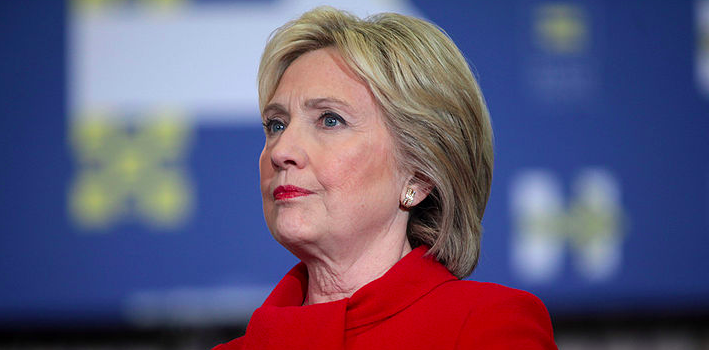The End Of The American Dream——Half Of US Households Are “Financially Fragile”
By Simon Wilson At MoneyWeek
What’s it like to be a middle-class American?
Increasingly precarious, it seems. In an article entitled “The Secret Shame of Middle Class Americans” in this month’s issue of The Atlantic, the writer Neal Gabler – an author, film critic and academic – came out as one of the many millions of apparently middle-class Americans who are in fact living in a “more or less continual state of financial peril” – scrabbling around to make ends meet, and mostly failing.
Gabler draws attention to a regular survey by the Federal Reserve, which asks consumers a set of questions, including how they would pay for a $400 emergency. “The answer: 47% of respondents said that either they would cover the expense by borrowing or selling something, or they would not be able to come up with the $400 at all”, writes Gabler. “Four hundred dollars! Who knew? Well, I knew. I knew because I am in that 47%.”
Trump’s Secret Weapon——-Massive Hillbama Premium Increases Coming Soon
by Wall Street Journal

Big health plans stung by losses in the first few years of the U.S. health law’s implementation are seeking hefty premium increases for individual plans sold through insurance exchanges in more than a dozen states.
The insurers’ proposed rates for individual coverage in states that have made their 2017 requests public largely bear out health plans’ grim predictions about their challenges under the health-care overhaul.
According to the insurers’ filings with regulators, large plans in states including New York, Pennsylvania and Georgia are seeking to raise rates by 20% or more.
In states such as Florida and Maryland, insurers are seeking to raise premiums by percentage averages that are markedly above 10%. Among those that have published so far, only in Vermont do big insurers’ requests fall below 10%.
Losing Ground In Flyover America, Part 2
by David Stockman
There has never been a more destructive central banking policy than the Fed’s current maniacal quest to stimulate more inflation and more debt. That’s what is killing real wages and economic vitality in flyover America—-even as it showers prodigious windfalls of unearned wealth on Wall Street and the bicoastal elites who draft on the nation’s vastly inflated finances.
In fact, the combination of pumping-up inflation toward 2% and hammering-down interest rates to the so-called zero bound is economically lethal. The former destroys the purchasing power of main street wages while the latter strip mines capital from business and channels it into Wall Street financial engineering and the inflation of stock prices.
Losing Ground In Flyover America, Part 3
by David Stockman
As we indicated in Part 2, the Fed’s crusade to pump-up inflation toward its 2.00% target by hammering-down interest rates to the so-called zero bound is economically lethal. The former destroys the purchasing power of main street wages while the latter strip mines capital from business and channels it into Wall Street financial engineering and the inflation of stock prices.In the case of America’s 80 million working age adults (25 or over) with a high school education or less, the Fed’s double whammy has been catastrophic. As we demonstrated yesterday, the employment-to-population ratio for this group has plummeted from 60% prior to the great recession to about 54% today.
In round terms this means that the number of job holders in that pool of the less educated has shrunk from 49.4 million to 43.5 million since early 2007. That’s nearly 6 million workers gone missing or 12% of the total from just nine years ago.
And as we documented yesterday this plunge is not due to aging demographics. The MSM meme that it’s all about the baby boomers hanging up their spikes doesn’t wash; the labor force participation rate of persons over 65 has actually increased sharply in recent years.
But even those who have managed to stay employed have suffered a devastating reduction in purchasing power. In fact, based on our Flyover CPI, each dollar of wages would buy 3.1% less annually or a cumulative 70% less since 1999.
And that assumes just 65% of the budgets of these lower-wage households are consumed by the four horsemen of inflation—-food, energy, medical and housing. There can be little doubt that they actually spend a materially greater share on these necessities than we have allocated to them in our index.
Losing Ground In Flyover America——Wanting For Work, Buried In Debt, Part 4
by David Stockman
The flyover zones of America are wanting for work and buried in debt. That’s the legacy of three decades of Washington/Wall Street Bubble Finance. The latter has exported jobs, crushed the purchasing power of main street wages and showered the bicoastal elites with the windfalls of financialization.The graph below depicts the main street side of this great societal swindle at work. There are currently 126 million prime working age persons in the US between 25 and 54 years of age. That’s up from 121 million at the beginning of 2000.
Yet even as this business cycle is rolling over, the 77.1 million employed full-time from that pool is still 1.2 million below its turn of the century level and accounts for only 61% of the population. On top of that, average real hourly wages have fallen by 7% (based on the Flyover CPI), as well.
It might be wondered, therefore, as to how real consumption expenditures rose by $3.1 trillion or 38% during the same 16-year period?
Rattle Me This—–So What If The G-7 Fools Are Uncomfortable?
by David Stockman
President Obama says that the feckless world leaders who squandered their taxpayers’ money on last week’s G-7 junket to Japan are “rattled” by Donald Trump.Bully for the Donald!
These clowns need to be rattled—-right to their very bones. And we might as well start with our own snake oil salesman-in-chief.
It seems that Obama can’t stop taking bows for the awesome recovery he claims to have presided over and the 14 million new jobs he claims to have created. Yet that’s as big a whopper as anything that Trump has ever let fly.
In fact, at the February 2008 peak prior to the crisis, the BLS reported 138.5 million nonfarm payroll jobs compared to 143.9 million in April 2016. The net gain is thus only 5.6 million, and it means nearly 9 million or 61% of the 14 million new jobs our President has been crowing about are not “new” at all.
Actually, they were “born-again” jobs, and even then they consist of lower paying and lesser quality jobs than the ones obliterated during the crash and so-called Great Recession.
For instance, there has been a loss of 2.3 million goods-producing jobs in manufacturing, mining/energy and construction, paying an average of $58,000 per year; and these have been swapped for 1.9 million jobs in leisure and hospitality paying less than $20,000 per year.
The White House may have somehow buried this in its awesome economy fibs, but it was surely noticed out in Flyover America where Trump has been striking a deep nerve of justifiable discontent.
Needless to say, with an adult population that has grown from 233 million to 253 million since the eve of the crisis, the net 5.6 million of primarily low-quality/low pay jobs created since then don’t cut it. Behind all the White House bombast about jobs and recovery, there is a stinging rebuke embedded in even the BLS’ highly medicated and surely exaggerated jobs counts.
To wit, the US economy has been creating net new jobs at the paltry rate of 56,000 per month over the last eight years, or at one-fourth the 200,000 per month growth rate of the adult population.
That actually represents a worsening of the trend that has been underway since the turn of the century. There are still fewer prime age workers between 25 and 54 years holding full-time jobs than there were 16 years ago.
Obama’s Latest Whopper—-Let’s Raise Social Security Benefits!
by David Stockman
The U.S. has approximately $80 trillion of unfunded liabilities for social security, medicare and other entitlements sitting atop a work force that is rapidly aging and an economy that is lapsing into stasis. Yet in the midst of a campaign diatribe about Donald Trump’s alleged lack of preparation for the highest office in the land, the current White House occupant proved that in nearly eight years he has learned exactly nothing about the nation’s abysmal fiscal plight.“And not only do we need to strengthen its long-term health, it’s time we finally made Social Security more generous and increased its benefits so that today’s retirees and future generations get the dignified retirement that they’ve earned,” Obama said in an economic call to arms in Elkhart, Indiana.Don’t bother to say he must be kidding. After all, our President also claims the disaster known as Obamacare is a roaring success; and that he has created 14 million jobs—-when, in fact, there are fewer full-time, full-pay “breadwinner jobs” in America today than when Bill Clinton scuttled out of the White House 16 years ago.
Still, your don’t have to be even a know nothing about baby-boom demographics to recognize that the words “increase” and “social security benefits” will never again inhabit the same universe. To wit, there are about 50 million persons 65 or over at present, but this number will rise to 80 million by around 2040 and nearly 100 million a decade or two thereafter.
Hillary Clinton Is Wall Street’s Favorite Candidate
53 Percent of Clinton's Donations Come from Wall Street Bankers

Wall Street bankers prefer to donate to Hillary Clinton’s campaign over Donald Trump’s. (Wikimedia)
According to the WSJ, in March, 53 percent of her donations came from Wall Street executives, while her main rival on the Republican side, Donald Trump, received less than 1 percent of his donations individuals related to the stock exchange.
Why Do Hispanic Voters Prefer Big Government?
Eligible Hispanic Voters Will Reach a Record 27 Million This Election Cycle

Cuban voters are surprisingly split almost 50-50 on their approval of big government. (Wikimedia)
As a “category,” the Hispanic electorate will make up a record 11.9 percent of all US-eligible voters, nearly the same as black voters, who make up 12.4 of the electorate. Youth is a bigger defining characteristic of Hispanic-eligible voters than for any other group.
And though specific interest-group issues such as US immigration policy are often offered as the main drivers for the Hispanic vote, there is a more fundamental sociopolitical factor at play.
Interestingly, Hispanic support for large government declines after more time immersed in American values.
No hay comentarios.:
Publicar un comentario